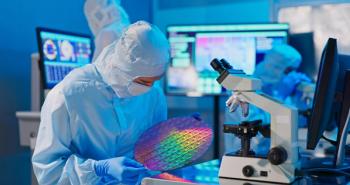
- Special Issues-10-01-2006
- Volume 0
- Issue 0
Analysis of Nitrogen, Other Nutrient Elements, and Toxic Elements in Fertilizers Using ICP Spectroscopy
Fertilizers are used to provide major plant nutrients (N, P, and K), secondary plant nutrients (Ca, S, and Mg), and micronutrients such as B, Mn, Fe, Cu, Zn, Mo, and Se. Accurate determination of the composition of fertilizers is essential so that the correct dose can be applied to the soil. An insufficient application of a fertilizer can result in poor crop yield, and an excessive application can result in environmental damage such as eutrophication by dissolved phosphates and nitrates entering water courses or land contamination from nonnutrient elements within the fertilizers. Inductively coupled plasma (ICP) spectroscopy offers cost-effective analysis of fertilizers because of its multielement capabilities. Complex torch designs and sparging systems have been employed in the past to determine nitrogen by ICP spectroscopy, but these additions to ICP instrumentation are costly and prolong analysis time.
This article reviews a method for simultaneous analysis of all of the plant nutrition elements, including nitrogen, as well as potential harmful elements (As, Cd, and Cr) in fertilizers using ICP spectroscopy without expensive modifications to the instrument and a compromise in detection limits and stability.
Instrumentation
This analysis required the ability to read signals from both axial and radial view to allow for both major constituent and trace elements to be determined in the same sample.
A high-resolution echelle spectrometer as part of the iCAP 6500 Duo ICP system (Thermo Electron Corporation, Waltham, Massachusetts) was used, coupled with a charge injection device (CID) detector. The CID detector is a nonblooming device and in this application was able to measure high concentrations of major nutrient elements and low levels of micronutrient elements at the same time without saturation.
The full wavelength coverage of the CID detector allows the optimum wavelength to be selected, while the high sensitivity of the axial torch provides the lowest possible detection limits for this application.
Sample Preparation
The samples were well mixed to ensure homogeneity and then weighed (1 g, Magruder-Fertilizer check sample numbers 2003/08, 2004/10, 2005/04) into a beaker. A 20-mL volume of 1:1 hydrochloric acid (37% A.R. grade) and deionized water was added to the beaker and the initial reaction was allowed to subside before the sample was heated to boiling. The sample was then boiled for 10 min. The sample was filtered into a 100-mL volumetric flask and made up to volume with deionized water.
Table I: The wavelength and plasma view used
Standard Preparation
A stock standard solution was prepared from a well-characterized interlaboratory performance sample using the same method that was used to prepare the samples. This was then diluted to the appropriate concentrations for the range of expected results. Additional nitrogen standards were prepared from ammonium dihydrogen orthophosphate using the same method used for the sample preparation, but replacing the 1 g of sample with an appropriate amount of ammonium dihydrogen phosphate. All deionized water used was as free from nitrogen as possible. This can be achieved either by boiling or by bubbling an inert gas though the water. In this analysis, the water was heated for 15 min, covered, and allowed to cool before use.
Table II: The parameters determined using the auto-optimization feature of iTEVA
Method Development
The standard sample introduction kit was used (glass cyclonic spray chamber, standard glass concentric nebulizer, and 2-mm center tube) because the samples contained low amounts of total dissolved solids. Wavelengths were selected for each of the elements of interest (Table I). Using the auto-optimization function of iTEVA software (Thermo Electron), the plasma parameters were optimized to produce a set of optimum parameters (Table II) for the elements of interest. The standards and samples were then run. The subarray plots of each of the wavelengths were examined and the optimum wavelength and background correction points were selected. Figure 1 shows the subarray plot of the nitrogen peak at 174.272 nm for each of the samples analyzed. It is from here that the integration area and the background correction points can be examined and repositioned if necessary.
Figure 1
Results
The instrument was calibrated and the samples were run in one continuous run. The calibration plot of nitrogen is shown in Figure 2. From this plot, it is possible to check the performance of the calibration standards onscreen by checking the percentage difference between the stated and the actual concentrations. The plot also depicts the correlation coefficients.
Figure 2
Conclusion
All of the results obtained using ICP spectroscopy are in good agreement with the mean results (within two standard deviations of the mean) of certified values. There are a few exceptions to this, which have occurred if the certified value was calculated from results submitted from fewer than five laboratories (this would lead to poor statistics) or if a different method was used to determine the results. In these cases, the results obtained using ICP spectroscopy are just outside two standard deviations of the mean. The elements with data calculated from less than five laboratories are As, B, and Se in sample ID 2003/08, Se in sample ID 2004/10, and Se in sample ID 2005/04.
The analysis of nitrogen was carried out in the axial view, which provided an instrument detection limit of 2.5 ppm and a typical RSD of 0.2% at N 174.272 nm with a standard axial torch. The radial view allows for the analysis of major elements, and the axial view allows for the analysis of trace elements. There was no need to use modified or custom torches that exclude atmospheric nitrogen from the plasma. No ionization buffer was used during the analysis, so torch life should be at a maximum.
The software allows for correction factors to be entered into a method so that an element result can be corrected and reported as a compound (P as P2O5 or K as K2O).
Matthew Cassap is an Application Specialist with Thermo Electron Corporation, Cambridge, UK
Articles in this issue
Newsletter
Get essential updates on the latest spectroscopy technologies, regulatory standards, and best practices—subscribe today to Spectroscopy.





